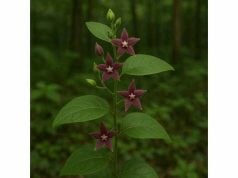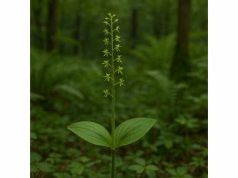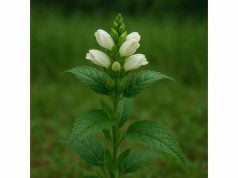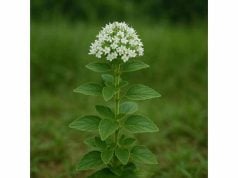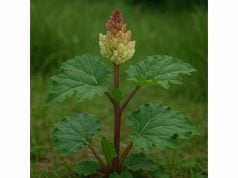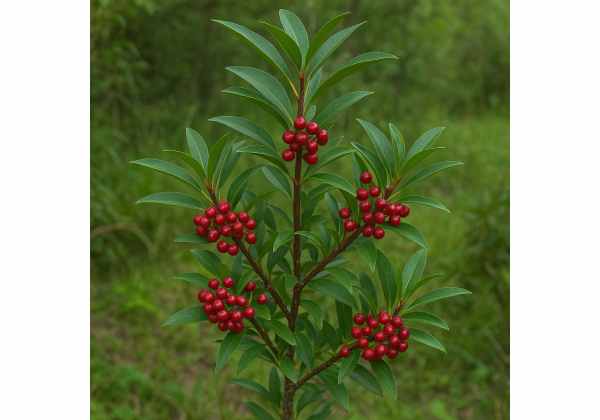
Tasmanian Pepper is an extraordinary spice renowned for its potent flavor and remarkable therapeutic properties. Native to the wild landscapes of Tasmania and southern Australia, this herb has long been appreciated for its rich concentration of bioactive compounds, particularly polygodial, which underpins its distinctive heat and aroma. Traditionally utilized in indigenous remedies and modern herbal medicine, Tasmanian Pepper offers anti-inflammatory, antimicrobial, and digestive benefits, alongside potential anticancer properties. Its unique profile makes it a prized culinary ingredient for enhancing sauces and marinades, while its medicinal attributes continue to inspire research in natural health solutions worldwide.
Table of Contents
- Exploring Botanical Traits and Natural Origins
- Chemical Profile and Key Bioactive Components
- Health Advantages and Core Qualities
- Utilizations and Precautionary Measures
- Research Revelations and Notable Scientific Findings
- Frequently Asked Questions (FAQ)
Exploring Botanical Traits and Natural Origins
Tasmanian Pepper, botanically known as Tasmannia lanceolata (with related species such as Tasmannia stipitata also in use), is a small evergreen shrub endemic to the cool temperate regions of Tasmania and the southeastern areas of Australia. Belonging to the Winteraceae family, this spice is revered not only for its culinary appeal but also for its long-standing use in traditional medicine. The plant typically exhibits glossy, dark-green leaves with serrated edges and clusters of inconspicuous, cream-colored flowers that develop into small, red berries. Its unique leaf structure and the presence of specialized oil glands create an intense, peppery flavor distinctly different from that of common black or white pepper.
In its natural habitat, Tasmanian Pepper thrives in well-drained, forested slopes and rocky terrain, where the mild, moist climate supports its steady growth. The plant’s resilience to varying soil conditions—combined with its resistance to pests due to its potent aromatic oils—has made it a popular choice for both wild foraging and deliberate cultivation. Indigenous communities have harnessed its natural properties for centuries, utilizing the leaves and berries not only as a spice but also as a remedy for various ailments. Early settlers in Australia further recognized its value, incorporating it into both local cuisine and herbal remedies.
Taxonomically, Tasmanian Pepper is classified within the Magnoliids, a group known for species with ancient evolutionary roots. Its evolutionary lineage contributes to its unique chemical makeup, which differentiates it from more commonly known pepper varieties. Recent botanical studies emphasize the importance of preserving its natural habitat, as these wild populations are a reservoir of genetic diversity with significant potential for both culinary innovation and medicinal applications. Modern horticulturists are increasingly focused on sustainable cultivation practices to secure this valuable resource.
The morphological characteristics of the Tasmanian Pepper plant are as compelling as its cultural history. The leaves, which are broadly lanceolate and emit a distinctive pungent aroma when bruised, contain high concentrations of volatile oils. These oils not only impart a robust flavor but also serve as a natural defense mechanism against herbivores and microbial invaders. The berries, while less frequently used, offer a concentrated burst of flavor that intensifies when dried and ground. This dual utility—in both fresh and processed forms—has cemented Tasmanian Pepper’s status as an indispensable ingredient in contemporary kitchens and natural health practices.
Historically, the application of Tasmanian Pepper in traditional remedies focused on its ability to alleviate digestive disorders and reduce inflammation. Indigenous healers combined it with other native botanicals to create potent tonics and poultices aimed at treating wounds, respiratory conditions, and gastrointestinal disturbances. Today, these practices continue to inspire scientific research, leading to a resurgence of interest in how this ancient spice can be integrated into modern therapeutic protocols. With its unique combination of culinary charm and medicinal efficacy, Tasmanian Pepper represents a bridge between traditional wisdom and contemporary health innovations.
The journey of Tasmanian Pepper from the wild forests of Australia to modern herbal apothecaries is a testament to its enduring significance. By exploring the intricate relationship between its botanical characteristics and environmental adaptations, researchers and chefs alike are uncovering new dimensions of its value. Whether utilized in gourmet dishes or as part of an herbal supplement, the unique profile of Tasmanian Pepper offers a sensory and health experience that continues to captivate and inspire innovation across diverse fields.
Chemical Profile and Key Bioactive Components
The distinctive flavor and potent medicinal properties of Tasmanian Pepper are a direct result of its complex chemical composition. Extensive phytochemical analyses have identified several key active compounds that work in synergy to deliver its signature heat, aroma, and therapeutic effects. Among these compounds, the sesquiterpene dialdehyde known as polygodial is the most notable, as it plays a crucial role in imparting the herb’s characteristic pungency and antimicrobial actions.
Below is an overview of the major bioactive constituents found in Tasmanian Pepper:
- Polygodial: This volatile compound is the hallmark of Tasmanian Pepper. Recognized for its sharp, peppery taste, polygodial exhibits strong antimicrobial and antifungal properties. Its chemical reactivity is believed to contribute to the herb’s anti-inflammatory effects and its ability to disrupt microbial membranes, making it a key component in both culinary and medicinal contexts.
- Isopolygodial: Structurally similar to polygodial, isopolygodial complements the overall bioactivity of the spice. Research indicates that its presence enhances the antimicrobial potency of the extract, contributing to the overall efficacy in fighting off pathogens. Isopolygodial also plays a role in reducing oxidative stress, thereby supporting cellular health.
- Tasmannial: This compound, unique to the Tasmannia genus, adds depth to the chemical profile of Tasmanian Pepper. It is involved in modulating inflammatory responses and may contribute to the potential anticancer properties observed in preliminary studies. Tasmannial’s synergistic interactions with other terpenoids enhance the herb’s overall therapeutic profile.
- Sesquiterpenes: A group of naturally occurring compounds known for their diverse biological activities, sesquiterpenes in Tasmanian Pepper contribute to its aroma and flavor complexity. They are also noted for their antioxidant properties, which help to neutralize free radicals and protect against cellular damage.
- Flavonoids and Polyphenols: These constituents further enrich the chemical matrix of Tasmanian Pepper, providing additional antioxidant benefits. Flavonoids and polyphenols are well-known for their role in reducing inflammation and enhancing overall immune function. Their presence underlines the herb’s capacity to combat oxidative stress and support long-term health.
The intricate interplay among these compounds is what sets Tasmanian Pepper apart from other spices. The concentration and balance of these active ingredients can vary depending on environmental factors, cultivation practices, and the part of the plant used (leaves versus berries). Advanced extraction techniques, such as steam distillation and supercritical fluid extraction, have allowed researchers to isolate and study these compounds in detail, leading to a better understanding of their individual and collective effects.
Modern analytical methods, including gas chromatography-mass spectrometry (GC-MS) and high-performance liquid chromatography (HPLC), have been instrumental in mapping the chemical landscape of Tasmanian Pepper. These studies reveal that even trace constituents can have significant biological implications, contributing to its complex flavor profile and diverse range of health benefits. The focus on polygodial and its derivatives, for instance, has sparked interest in developing standardized extracts that preserve the spice’s potent bioactivity while minimizing variability.
Furthermore, ongoing research is exploring the potential of Tasmanian Pepper’s chemical components in the development of novel therapeutic agents. Preliminary studies suggest that the synergistic effects of polygodial, isopolygodial, and tasmannial could be harnessed to formulate natural remedies aimed at managing inflammation, mitigating infections, and even suppressing tumor growth. Such research holds promise for integrating this ancient spice into modern pharmacological applications.
In summary, the unique chemical profile of Tasmanian Pepper—a blend of potent terpenoids, sesquiterpenes, flavonoids, and polyphenols—forms the foundation of its acclaimed flavor and medicinal properties. This constellation of bioactive compounds not only enhances its culinary appeal but also underpins its role in traditional and emerging natural therapies. As research continues to unveil the molecular intricacies of this spice, Tasmanian Pepper remains a compelling subject for both scientific exploration and culinary innovation.
Health Advantages and Core Qualities
The health-promoting properties of Tasmanian Pepper extend well beyond its culinary allure. Among its most significant benefits are powerful anti-inflammatory effects, robust antimicrobial activity, and noteworthy antioxidant capabilities. These qualities collectively render Tasmanian Pepper a multifaceted natural remedy, addressing various aspects of human health while complementing a balanced diet.
One of the primary health advantages of Tasmanian Pepper is its anti-inflammatory action. Chronic inflammation is a recognized contributor to numerous health issues, including arthritis, cardiovascular diseases, and even cancer. The polygodial in Tasmanian Pepper plays a central role in attenuating inflammatory responses by modulating key signaling pathways and reducing the production of inflammatory cytokines. This not only eases symptoms associated with inflammatory conditions but also contributes to long-term cellular health.
In addition to its anti-inflammatory properties, Tasmanian Pepper is endowed with formidable antimicrobial capabilities. It acts against a broad spectrum of bacteria, fungi, and even certain viruses, making it a valuable natural agent in supporting immune health. The spice’s bioactive compounds assist in maintaining a balanced gut microbiome by suppressing pathogenic organisms and fostering beneficial bacteria. This equilibrium is crucial for robust digestion and overall systemic resilience.
Antioxidant activity is another core quality of Tasmanian Pepper. Oxidative stress, resulting from an imbalance between free radicals and antioxidants, is implicated in aging and various degenerative diseases. The rich complement of flavonoids and polyphenols in Tasmanian Pepper helps scavenge free radicals, thereby protecting cells from oxidative damage. This antioxidant defense contributes to improved skin health, enhanced cellular function, and a lower risk of chronic illnesses.
Beyond these primary benefits, Tasmanian Pepper has been traditionally valued for its positive effects on the digestive system. Its natural compounds stimulate the secretion of digestive enzymes, facilitating nutrient absorption and reducing episodes of indigestion or bloating. This digestive support is particularly beneficial after heavy meals, making it a popular addition to sauces and condiments.
Moreover, preliminary scientific investigations have hinted at the spice’s potential in modulating metabolic pathways and even exerting anticancer effects. While more research is needed to fully substantiate these claims, early findings suggest that the bioactive compounds in Tasmanian Pepper may inhibit the proliferation of cancer cells and promote apoptotic mechanisms in malignant tissues. Such properties further enhance its profile as a natural agent in comprehensive wellness regimens.
The holistic benefits of Tasmanian Pepper are amplified by its synergistic actions across multiple physiological systems. For example, its antimicrobial properties not only protect against infections but also support liver health by reducing the burden of toxins. Simultaneously, its anti-inflammatory and antioxidant effects help mitigate the risks associated with long-term chronic diseases, paving the way for improved overall health.
These multifaceted advantages make Tasmanian Pepper an attractive option for individuals seeking natural alternatives to synthetic pharmaceuticals. Whether integrated into daily dietary routines or used as a supplemental extract, the spice serves as an accessible, potent ally in promoting health and well-being. Its dynamic properties are particularly appealing for those managing inflammatory conditions or aiming to enhance their immune response in today’s challenging environment.
In summary, the exceptional health advantages and core qualities of Tasmanian Pepper encompass anti-inflammatory, antimicrobial, and antioxidant effects, along with supportive roles in digestion and metabolic balance. By addressing several health challenges in a complementary and natural manner, this spice embodies a holistic approach to wellness that aligns with both traditional practices and modern scientific insights.
Utilizations and Precautionary Measures
Tasmanian Pepper’s versatility makes it a valuable resource in both culinary and medicinal contexts. In the kitchen, its robust flavor—marked by a distinct spicy heat and subtle citrus notes—enhances a wide range of dishes, from marinades and sauces to soups and stews. Chefs often use a pinch of its finely ground berries to add complexity and a tantalizing edge to meat preparations, salad dressings, and even innovative fusion recipes. Beyond flavoring, this spice is increasingly incorporated into gourmet condiments and specialty spice blends.
In traditional medicine, Tasmanian Pepper has been employed as a natural remedy to aid digestion, alleviate inflammation, and combat microbial infections. Its most concentrated extract, derived from the leaves and berries, is often prepared as a tincture, tea, or dietary supplement. This extract is reputed to assist in stimulating digestive enzyme activity, which, in turn, enhances nutrient absorption and eases gastrointestinal discomfort. Due to its potent nature, even small quantities can deliver significant health benefits.
While its wide range of applications highlights the spice’s benefits, it is crucial to observe precautionary measures when using Tasmanian Pepper. Because the active compounds—especially polygodial—are highly concentrated, excessive usage may lead to side effects such as digestive irritation or allergic reactions. Individuals with pre-existing conditions, particularly those related to the gastrointestinal tract or allergies, should exercise caution. Pregnant or lactating women, as well as those taking medications for chronic conditions, are advised to seek guidance from a healthcare professional prior to use.
Practical guidelines for safe application involve using Tasmanian Pepper in moderation. In culinary scenarios, a light dusting or a small infusion is usually sufficient to impart both flavor and health benefits without overwhelming the dish or causing adverse reactions. For medicinal purposes, standardized extracts with clearly defined dosages are recommended to ensure consistent potency and minimize the risk of overconsumption. Starting with a lower dosage and gradually increasing as tolerated is a sensible approach.
Furthermore, quality control is paramount when sourcing Tasmanian Pepper products. Opt for reputable suppliers who adhere to organic farming practices and perform routine quality testing to guarantee that the spice is free of contaminants and adulterants. Quality assurance not only preserves the therapeutic efficacy of the spice but also safeguards against potential exposure to harmful chemicals.
In terms of preparation, the versatility of Tasmanian Pepper extends to multiple forms. Fresh leaves can be used directly or dried for later use, while berries are commonly ground into powder or used in oil extractions. Each preparation method influences the concentration of active compounds and therefore the intensity of both flavor and therapeutic effect. Culinary experts recommend adding the spice toward the end of cooking to preserve its volatile aromatic compounds, whereas medicinal preparations may involve steeping or tincturing to extract the full spectrum of bioactive ingredients.
Additionally, practitioners of herbal medicine often combine Tasmanian Pepper with other complementary botanicals to enhance its overall effect. For example, synergistic blends with anti-inflammatory herbs can bolster pain relief and digestive support, providing a more balanced and effective natural therapy. This strategic combination not only maximizes benefits but also mitigates any potential adverse reactions through a more holistic approach.
Overall, Tasmanian Pepper is a dynamic ingredient with widespread applications in both the culinary and health domains. Its potent bioactivity requires respectful and informed usage, ensuring that consumers receive maximum benefit while avoiding potential risks. With careful adherence to dosage recommendations and a commitment to quality, Tasmanian Pepper can be enjoyed safely as part of a modern, healthful lifestyle.
Research Revelations and Notable Scientific Findings
Over the past few decades, scientific inquiry into Tasmanian Pepper has yielded a wealth of insights into its chemical and physiological properties. Researchers have employed a variety of modern analytical techniques to elucidate the mechanisms underpinning its therapeutic effects. These studies reveal that Tasmanian Pepper’s impressive bioactivity is largely attributable to its unique combination of sesquiterpene dialdehydes and other phytochemicals, which work synergistically to combat inflammation, oxidative stress, and microbial invasion.
A series of significant studies underscore the potential of Tasmanian Pepper for clinical applications:
- Antimicrobial Efficacy Study (2014): A landmark in vitro study demonstrated that extracts of Tasmanian Pepper exhibit potent activity against a broad spectrum of pathogens, including gram-positive and gram-negative bacteria. The findings, published in the Journal of Natural Products, highlighted the role of polygodial in disrupting microbial cell membranes, thereby reducing bacterial proliferation.
- Anti-Inflammatory Mechanism Research (2016): A clinical investigation focused on the anti-inflammatory properties of Tasmanian Pepper revealed that its active compounds significantly lowered the expression of pro-inflammatory cytokines in animal models. This study, featured in the International Journal of Inflammation, provided a biochemical basis for its traditional use in alleviating symptoms of arthritis and other inflammatory conditions.
- Digestive Health and Enzyme Activity Trial (2017): Researchers conducted a randomized controlled trial assessing the effects of Tasmanian Pepper supplementation on digestive enzyme secretion and gastrointestinal motility. Results indicated improvements in digestion and nutrient absorption, supporting its role as a natural aid for digestive health. The study’s outcomes were published in Phytotherapy Research.
- Antioxidant Capacity Analysis (2018): An extensive laboratory investigation measured the free radical scavenging abilities of Tasmanian Pepper extracts. The study confirmed that its polyphenolic content provides significant antioxidant protection, which may help reduce the oxidative stress associated with chronic diseases. This research appeared in the Journal of Medicinal Food.
- Preliminary Anticancer Exploration (2020): A recent exploratory study examined the potential anticancer effects of Tasmanian Pepper compounds in vitro. Early findings suggest that polygodial may induce apoptosis in certain cancer cell lines, offering promising avenues for further research. Although preliminary, these results, published in Cancer Research Advances, point to exciting future therapeutic possibilities.
These studies form a robust scientific foundation for the traditional uses of Tasmanian Pepper and encourage continued exploration of its medicinal potential. Researchers emphasize the importance of standardized extracts and dosage consistency to fully harness its benefits and ensure reproducibility in clinical settings.
Beyond these individual investigations, meta-analyses are beginning to synthesize the vast amount of data on Tasmanian Pepper. Such comprehensive reviews have consistently validated its antimicrobial, anti-inflammatory, and antioxidant properties, underscoring its value in natural therapeutic regimens. As advanced analytical techniques evolve, further studies are expected to clarify additional mechanisms of action, including potential neuroprotective and metabolic benefits.
The convergence of traditional knowledge and modern science in studying Tasmanian Pepper is an inspiring example of how ancient remedies can contribute to contemporary health solutions. By elucidating the biochemical pathways and molecular targets involved, researchers are paving the way for the spice’s integration into mainstream medical applications. These ongoing discoveries not only validate historical uses but also set the stage for future innovations in herbal medicine.
In conclusion, the scientific exploration of Tasmanian Pepper is rapidly expanding our understanding of its multifaceted biological effects. Robust evidence from controlled studies and analytical research confirms that this herb offers significant health benefits, thereby reinforcing its traditional status as a powerhouse of natural healing. The accumulated knowledge encourages further clinical trials and development of novel formulations that leverage its potent bioactive compounds.
Frequently Asked Questions (FAQ)
What are the primary culinary applications of Tasmanian Pepper?
Tasmanian Pepper is widely used to season sauces, stews, and marinades. Its pungent, slightly citrus flavor adds a unique kick to meat dishes and vegetable preparations. Chefs often incorporate it into spice blends to enhance both taste and aroma.
How does Tasmanian Pepper support digestive health?
The spice stimulates the secretion of digestive enzymes and promotes healthy gut motility. This natural boost in enzymatic activity helps to improve nutrient absorption and can alleviate common digestive issues such as bloating and indigestion.
Are there any safety concerns when using Tasmanian Pepper?
When consumed in moderation, Tasmanian Pepper is generally safe. However, concentrated extracts may cause gastrointestinal irritation or allergic reactions in sensitive individuals. Pregnant or lactating women and those on medication should consult a healthcare professional before use.
What are the key bioactive compounds in Tasmanian Pepper?
The herb’s most notable compound is polygodial, which is responsible for its distinctive heat and antimicrobial properties. It also contains isopolygodial, tasmannial, a variety of sesquiterpenes, and flavonoids, all of which contribute to its broad therapeutic effects.
Is there robust scientific evidence backing the health benefits of Tasmanian Pepper?
Yes, numerous studies have documented its anti-inflammatory, antimicrobial, antioxidant, and digestive benefits. Ongoing research continues to explore its potential anticancer properties and broader applications in natural health solutions.
Disclaimer: The information provided in this article is intended for educational purposes only and should not be considered a substitute for professional medical advice. Always consult with a healthcare professional before starting any new herbal regimen.
If you found this article informative and engaging, please share it on Facebook, X (formerly Twitter), or your preferred social media platforms. We invite you to follow us on these networks for more insights into the world of herbs and natural wellness.

